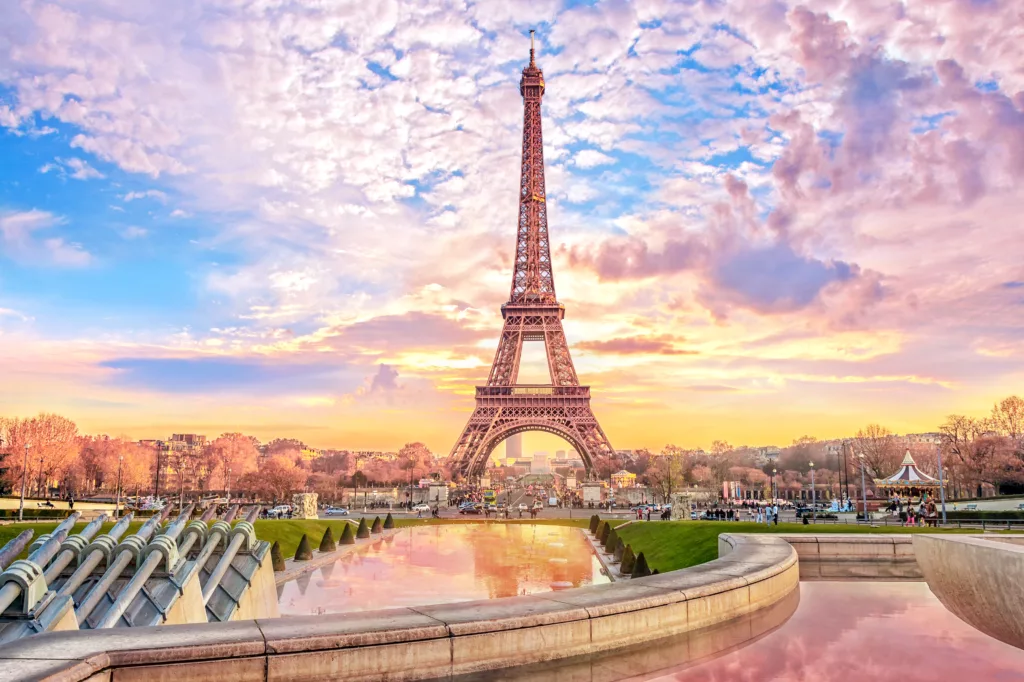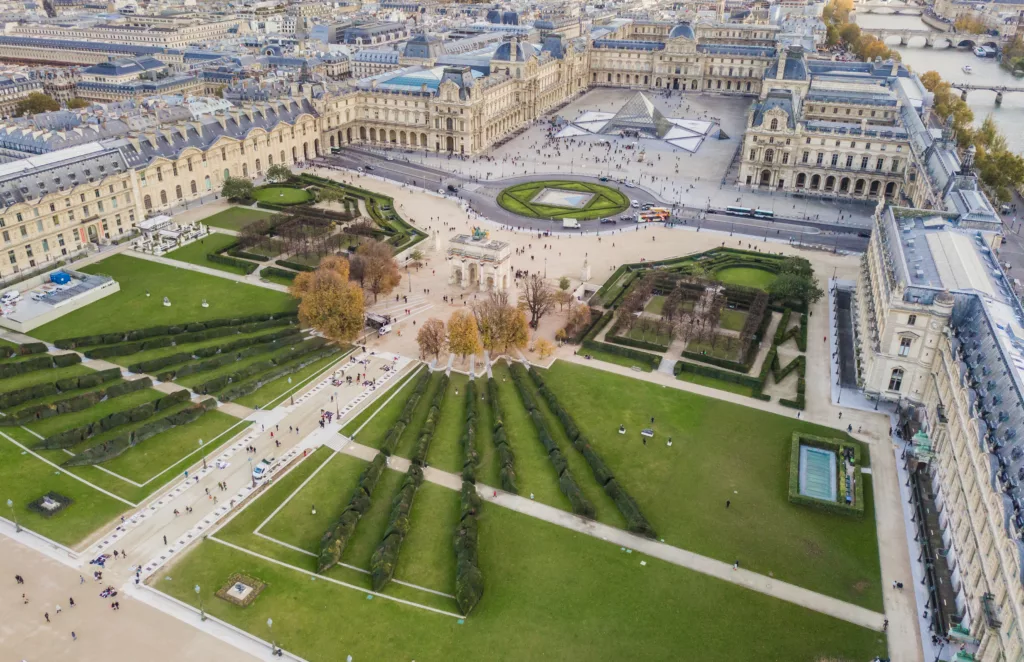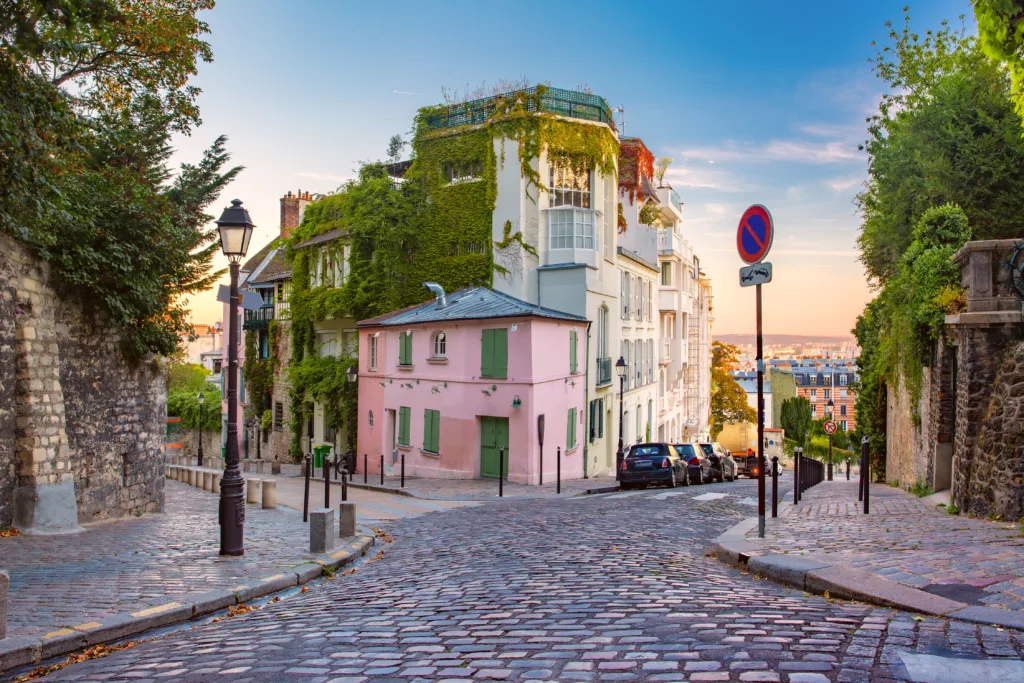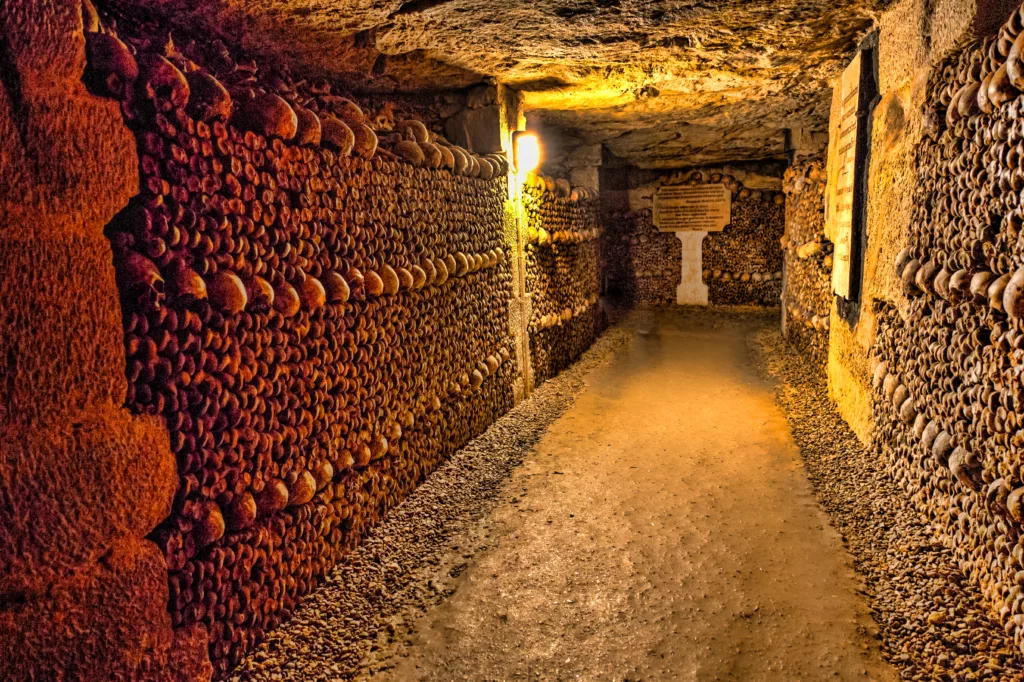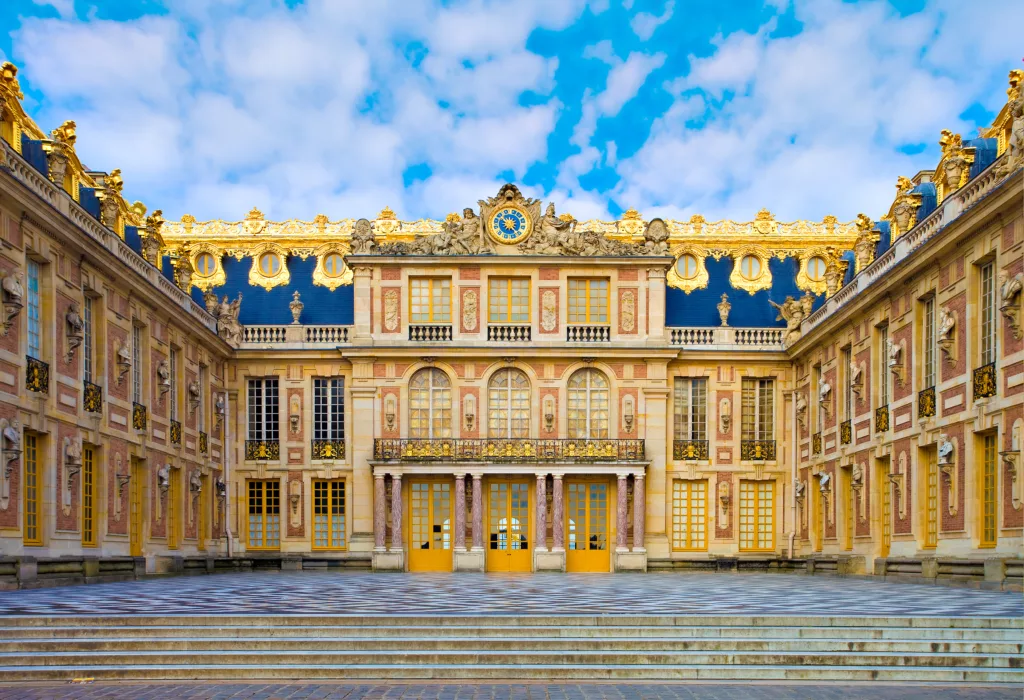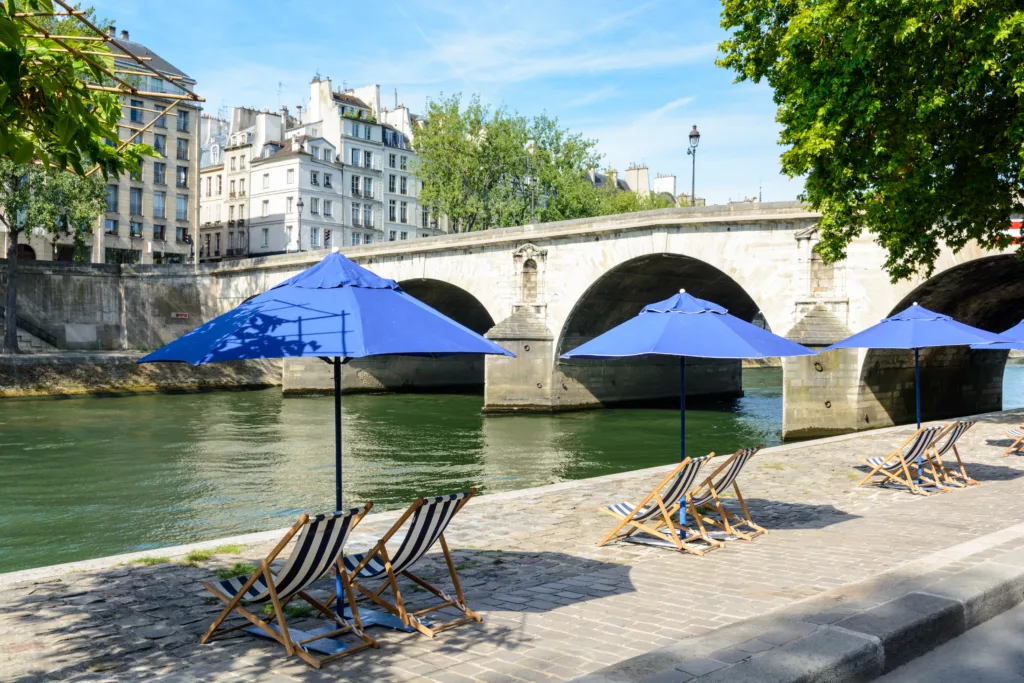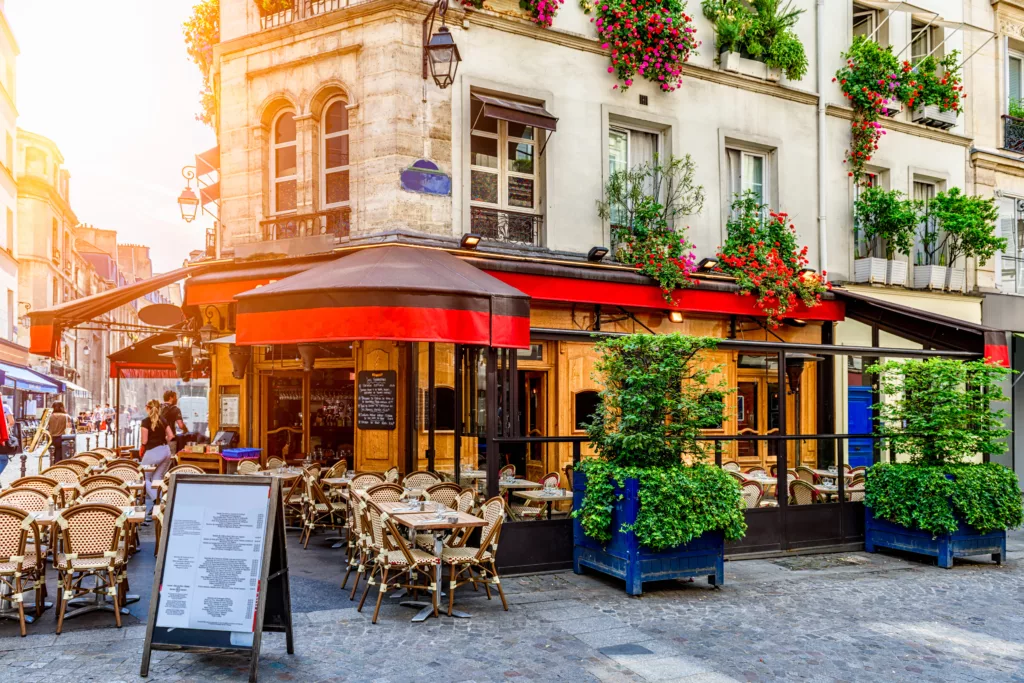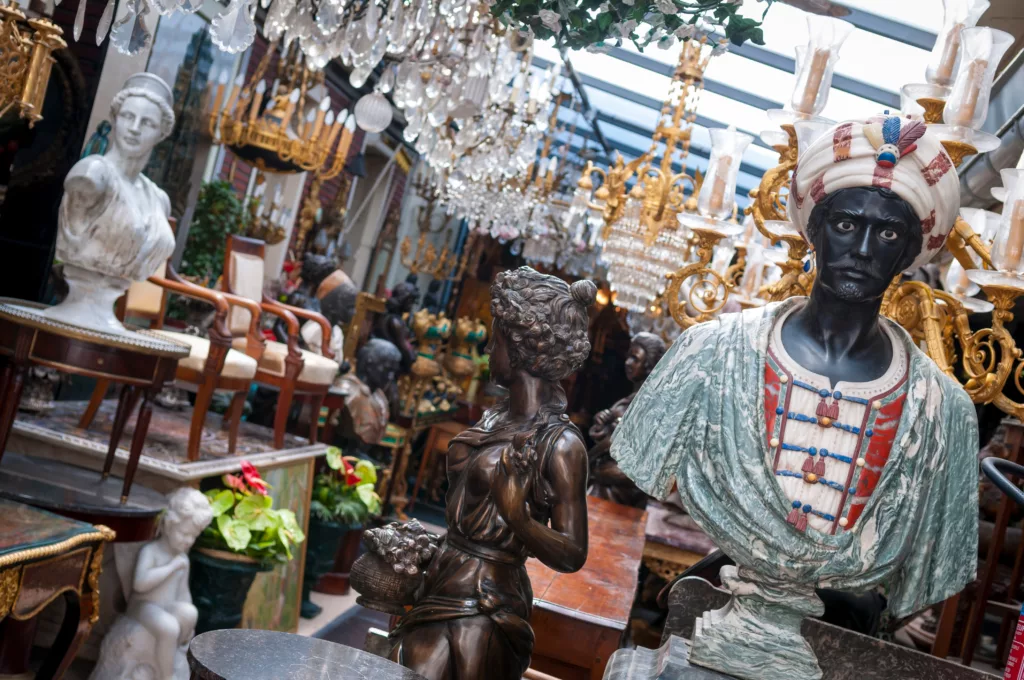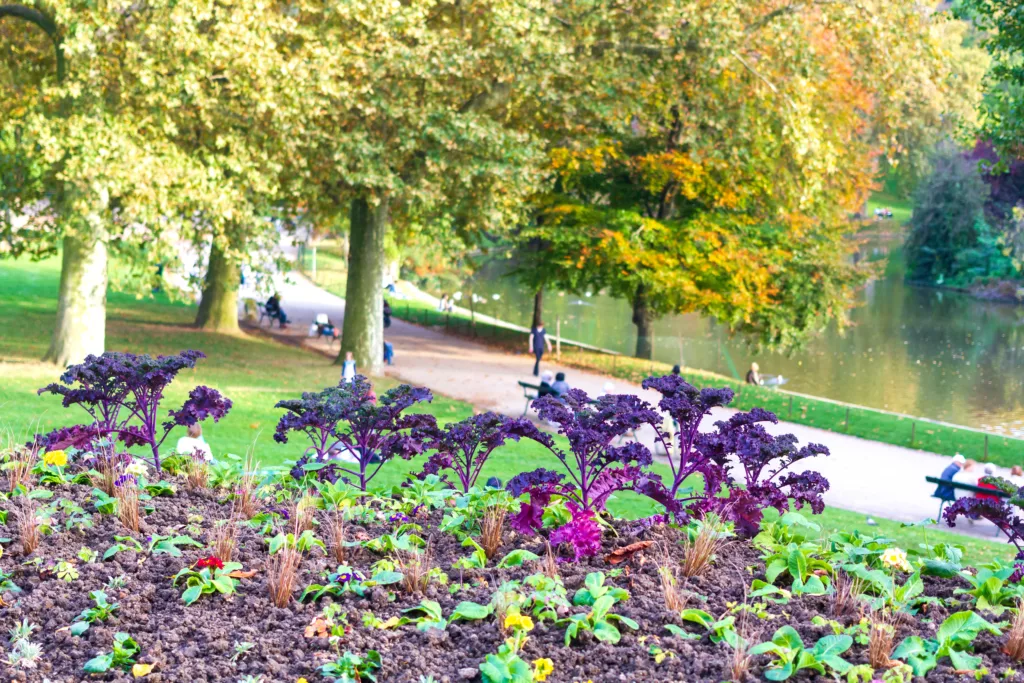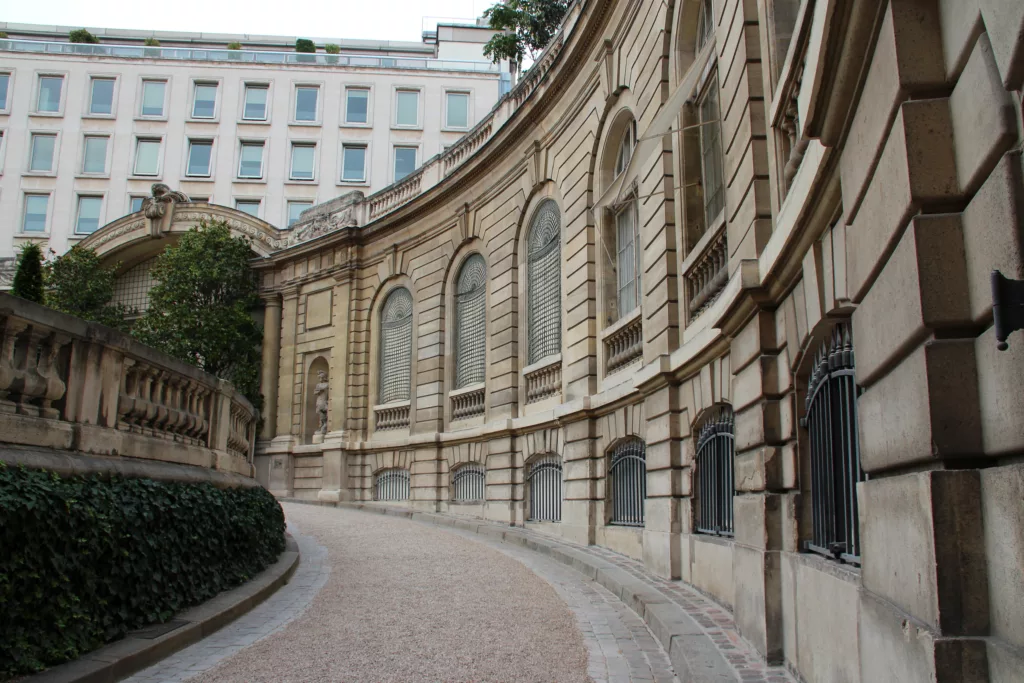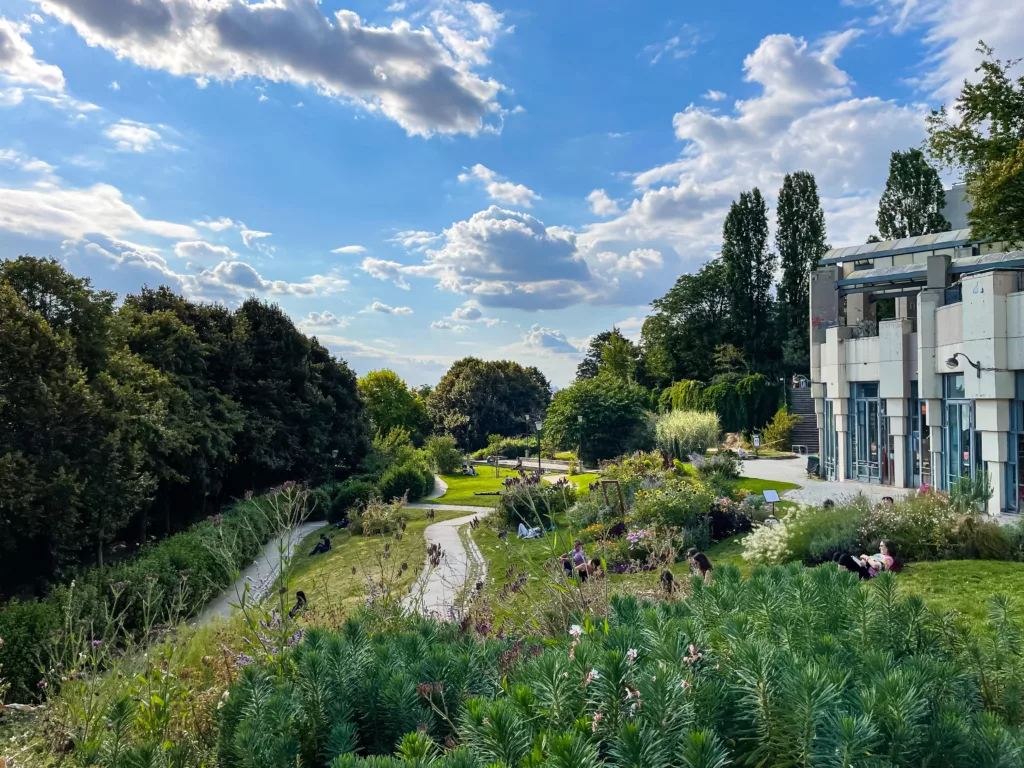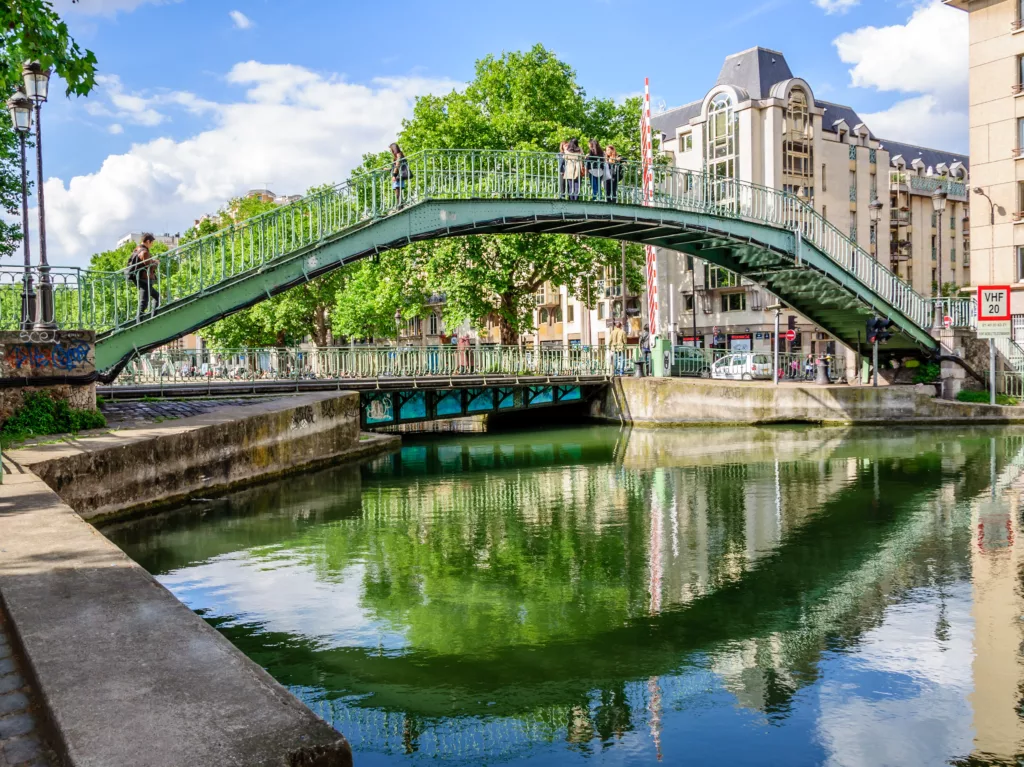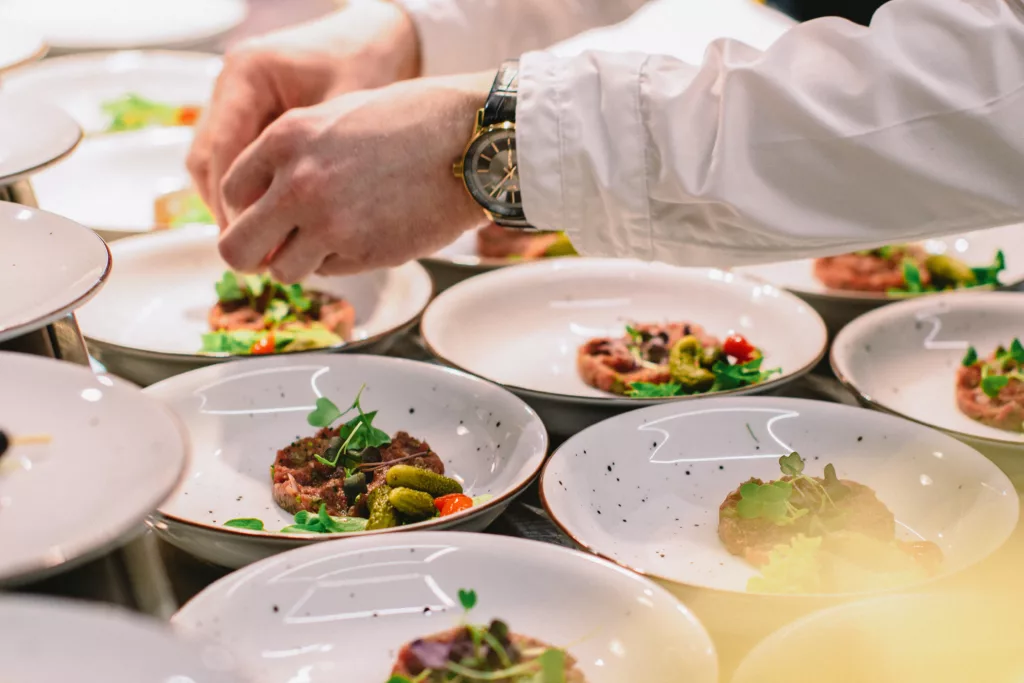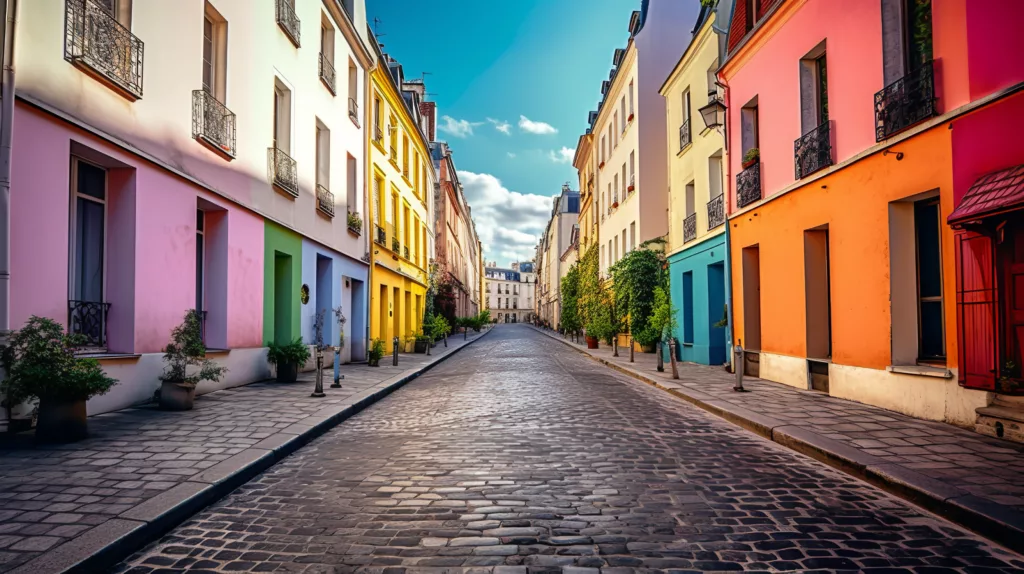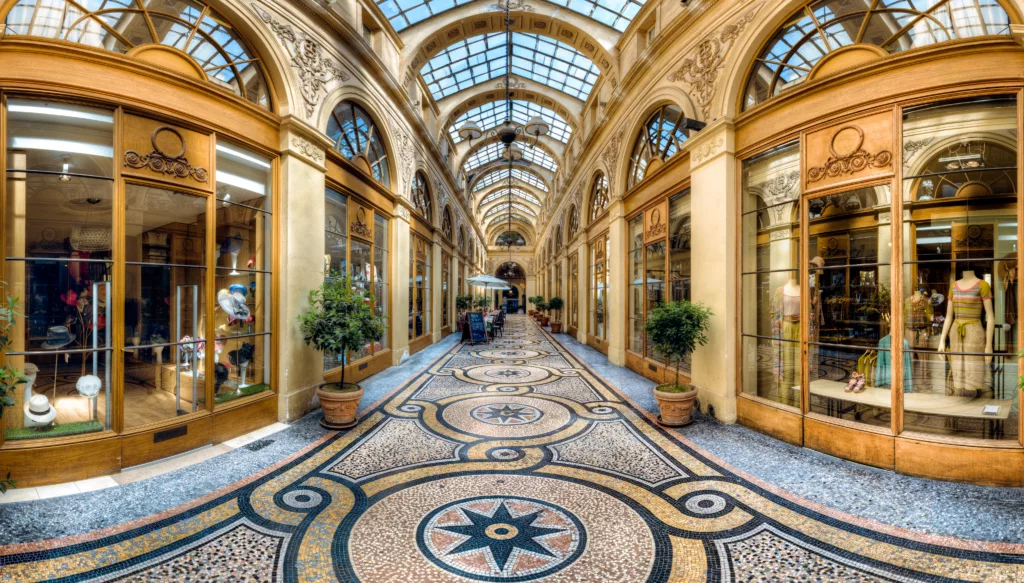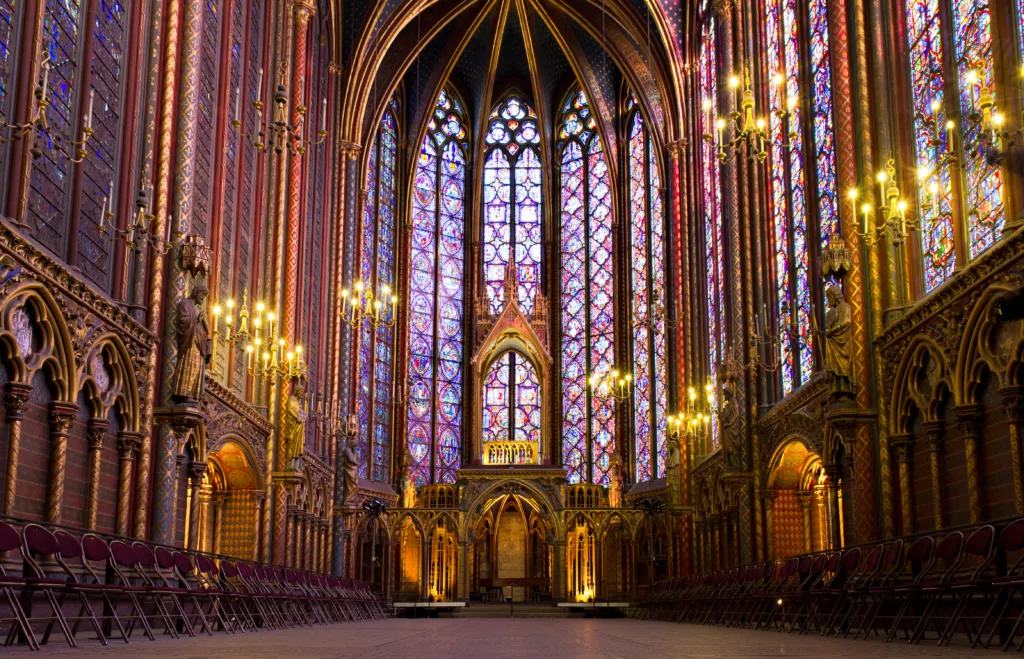Welcome to Paris, the dazzling City of Lights, known for its enchanting blend of historic grandeur, artistic richness, and chic modernity. Whether it’s your first visit or a returning trip, Paris never fails to surprise, captivate, and allure. From the iconic Eiffel Tower standing tall in all its glory, to the world-renowned Louvre Museum hosting an array of artistic masterpieces, the city is teeming with famous sights that demand your attention.
However, if you think Paris is only about these well-known landmarks, prepare to be pleasantly surprised. The true charm of Paris lies in its hidden corners, the lesser-known experiences that offer a peek into the local life. It’s the enticing aroma of authentic French cuisine wafting from a charming bistro tucked away in a quiet street, the vibrant energy of a bustling flea market, or the serene beauty of an overlooked park. This is where the magic of Paris truly unfolds.
With so much to discover and explore, planning your Parisian adventure can be overwhelming. That’s why we’ve curated a list of 21 things to do in Paris that perfectly balances the iconic with the lesser-known. It ensures that you experience the quintessential Paris, along with a taste of its hidden delights.
1. Ascend the Eiffel Tower
The heart of Paris is home to the world-renowned Eiffel Tower, a feat of engineering that has become an emblem of the city’s grandeur and elegance. Completed in 1889 for the Exposition Universelle, a world’s fair marking the 100-year anniversary of the French Revolution, the Eiffel Tower was initially met with criticism from Parisians, who considered it an eyesore. Today, however, it stands as an unmissable symbol of Paris and is revered as a masterpiece of architectural design.
At a height of 330 meters (1,083 ft), the Eiffel Tower was the tallest man-made structure in the world until the completion of the Chrysler Building in New York City in 1930. It comprises three levels that visitors can explore. The first and second levels house restaurants, while the third level, also known as the summit, offers a panoramic view of the city that leaves visitors spellbound.
Whether you choose to ascend the tower or admire it from below, the Eiffel Tower’s imposing stature and intricate design make it a sight to behold. At night, the tower is illuminated in a golden light, and every hour on the hour, it sparkles with thousands of twinkling lights, creating a mesmerizing spectacle.
For those adventurous enough, you can climb the 674 steps to the second level, or opt for a less strenuous journey via the elevator. Either way, the view from the top is worth the effort, offering an unparalleled vista of Paris’ sprawling cityscape.
Voyagix Tips
For a memorable visit to the Eiffel Tower, consider these tips:
- Getting There: The Eiffel Tower is easily accessible via the Paris Metro. The closest stations are Bir-Hakeim and Trocadéro. For more information, you can check the official Eiffel Tower website.
- Best Time to Visit: To avoid the largest crowds, consider visiting early in the morning or in the late evening. For a truly magical experience, time your visit to coincide with the sunset or the hourly twinkling lights at night.
- Booking Tickets: Tickets can be purchased in advance online, which is advisable during peak tourist seasons to avoid long waiting lines. Keep in mind that tickets to the summit often sell out quickly.
- Dining: The tower houses two restaurants, Le 58 Tour Eiffel on the first level and Le Jules Verne on the second. Reservations are recommended if you plan to dine during your visit.
The Eiffel Tower is more than just an iconic landmark; it’s a testament to human creativity and a symbol of the enduring spirit of Paris. Whether you’re taking in the view from its summit or marveling at its grandeur from the Champ de Mars park, the Eiffel Tower is sure to provide an unforgettable experience.
2. Delve into the Louvre Museum
No trip to Paris is complete without a visit to the majestic Louvre Museum. Housed within a historic palace that was once the seat of French royalty, the Louvre is today the world’s largest art museum and a central landmark of Paris. Its iconic glass pyramid entrance is a masterpiece in itself and serves as a gateway to an astonishing collection of art and antiquities.
The Louvre Museum is renowned for its diverse and vast collection of over 380,000 objects and 35,000 works of art, displayed in an area spanning 60,600 square meters. The museum boasts an extensive range of art forms and historical artifacts, from ancient Egyptian relics to Greek and Roman antiquities, and from the crown jewels of French royalty to classical sculptures like Venus de Milo. And of course, the Louvre is the home of Leonardo da Vinci’s enigmatic masterpiece, the Mona Lisa.
Walking through the Louvre, you embark on a journey across time and cultures. Every corner turned reveals a new world, every room explored tells a new story. Whether you’re an art enthusiast or a casual visitor, the grandeur and richness of the Louvre are sure to leave you awestruck.
Though the museum’s extensive collections can seem overwhelming, each visit becomes a unique adventure as you unravel the stories behind the artworks, explore the history they embody, and witness the immense creativity of the human spirit.
Voyagix Tips
For a rewarding visit to the Louvre Museum, consider these tips:
- Plan Your Visit: The Louvre is enormous, and it would be impossible to see everything in a single visit. Plan ahead by deciding which exhibits you want to see most. The official Louvre website provides detailed information about the collections.
- Timing: Wednesday and Friday evenings are less crowded, and the museum stays open until 9:45 pm. If possible, avoid visiting on the first Sunday of the month when entrance is free and the museum is usually very busy.
- Buy Tickets in Advance: To avoid long queues, purchase your ticket online in advance. The Louvre’s official ticket portal is the most reliable source.
- Guided Tours: Consider taking a guided tour, which can provide context and insights to the artworks and help you navigate the vast museum.
Exploring the Louvre Museum is more than just a sightseeing excursion; it’s an immersive journey through the pages of history and a celebration of human creativity. Whether you’re admiring the iconic smile of the Mona Lisa or marveling at ancient Egyptian artifacts, the Louvre offers an enriching and inspiring experience that transcends time.
3. Stroll Around Montmartre
The vibrant, hilltop neighborhood of Montmartre captures the bohemian spirit of Paris like no other place. Known as the city’s artistic hub, Montmartre was once home to prolific artists like Picasso, Renoir, and Van Gogh. Today, it continues to inspire with its unique blend of historical charm, creative flair, and enticing ambience.
As you meander through the winding, cobbled streets of Montmartre, you’ll discover a treasure trove of creativity. Artists can be seen at work in the bustling Place du Tertre, creating their masterpieces en plein air, just as their artistic predecessors did in the late 19th and early 20th centuries. This lively square, filled with illustrators, portraitists, and caricaturists, offers a glimpse into the thriving artistic scene that defines Montmartre.
Not to be missed is the iconic Sacré-Cœur Basilica, perched atop the highest point in the city. This stunning white-domed church offers breathtaking panoramic views of Paris. Nearby, the Montmartre vineyard, the last active vineyard in Paris, offers a quaint and unexpected rural charm in the heart of the bustling city.
Around every corner of Montmartre, you can feel the echoes of the bohemian past. From the lively cabarets, including the world-famous Moulin Rouge, to the quieter, hidden squares lined with traditional cafes and bakeries, Montmartre embodies the enchanting spirit of old Paris.
Voyagix Tips
For an authentic Montmartre experience, consider these tips:
- Getting There: Montmartre is easily accessible by the Paris Metro. Abbesses on Line 12 or Anvers on Line 2 are convenient stations. You can also take the Montmartrobus or the funicular to reach the top.
- Exploring Montmartre: Consider taking a guided walking tour to uncover the neighborhood’s rich history and hidden gems. Alternatively, explore at your own pace, but be sure to check out a map of Montmartre to help navigate the winding streets.
- Visit the Sacré-Cœur Basilica: Arrive early or late in the day to avoid crowds and enjoy the spectacular views of Paris from the top of the hill. Entrance to the basilica is free, but there’s a small fee to ascend to the dome.
- Local Cuisine: Don’t miss the chance to sample traditional French pastries at a local bakery or enjoy a meal at a charming Montmartre café.
A stroll through the lively streets of Montmartre is a journey into the artistic heart of Paris. Whether you’re sketching at Place du Tertre, admiring the view from Sacré-Cœur, or savoring a croissant at a local bakery, Montmartre offers an experience that is quintessentially Parisian and utterly unforgettable.
4. Discover the Catacombs of Paris
Delve into the dark underbelly of Paris as you venture into the chilling Catacombs, an intricate network of tunnels that serves as the final resting place for millions. An eerie counterpoint to the city’s famed charm, the Catacombs provide a unique and macabre glimpse into Paris’ past.
Established in the late 18th century, the Catacombs were created to solve the problem of overflowing cemeteries within the city. Today, this labyrinthine ossuary holds the remains of an estimated six million people. Walking through the narrow, dimly lit tunnels, you’ll encounter walls of neatly stacked skulls and bones, a sobering testament to the city’s rich and complex history.
But the Catacombs are not just a vast grave. They also offer a fascinating history lesson, with informative plaques detailing the transformation of Paris from a medieval city to the modern metropolis it is today. The tour also includes historical monuments and sculptures created by a former quarry worker, adding another layer of intrigue to this unique experience.
Exploring the Catacombs of Paris is a stark reminder of the city’s perpetual transformation, revealing a side of Paris that is often overlooked but is integral to its identity. It’s a journey that isn’t for the faint of heart, but one that is truly unforgettable.
Voyagix Tips
For a fascinating visit to the Paris Catacombs, consider these tips:
- Getting There: The Catacombs are located in Paris’ 14th arrondissement, and the entrance is directly across from the Denfert-Rochereau Metro and RER station. For more information, check the official Catacombs website.
- Timing: Lines to enter the Catacombs can be lengthy, especially during the tourist season. Aim to visit early in the morning or during weekdays to avoid the biggest crowds.
- Buy Tickets in Advance: To save time, consider purchasing your tickets online in advance from the official ticket portal. Note that the Catacombs are not suitable for people with mobility issues due to the number of steps and the uneven ground.
- Dress Appropriately: The Catacombs are damp and chilly (about 14°C/57°F), even in summer. Wear warm clothes and sturdy shoes.
Whether you’re a history buff, an adventurer, or simply looking for an unusual experience, a visit to the Paris Catacombs offers a rare peek into the city’s past. As you traverse the hushed, skeletal corridors, you’ll be stepping into a different era, immersing yourself in the intriguing, often eerie, yet utterly captivating, depths of Parisian history.
5. Enjoy a Show at Moulin Rouge
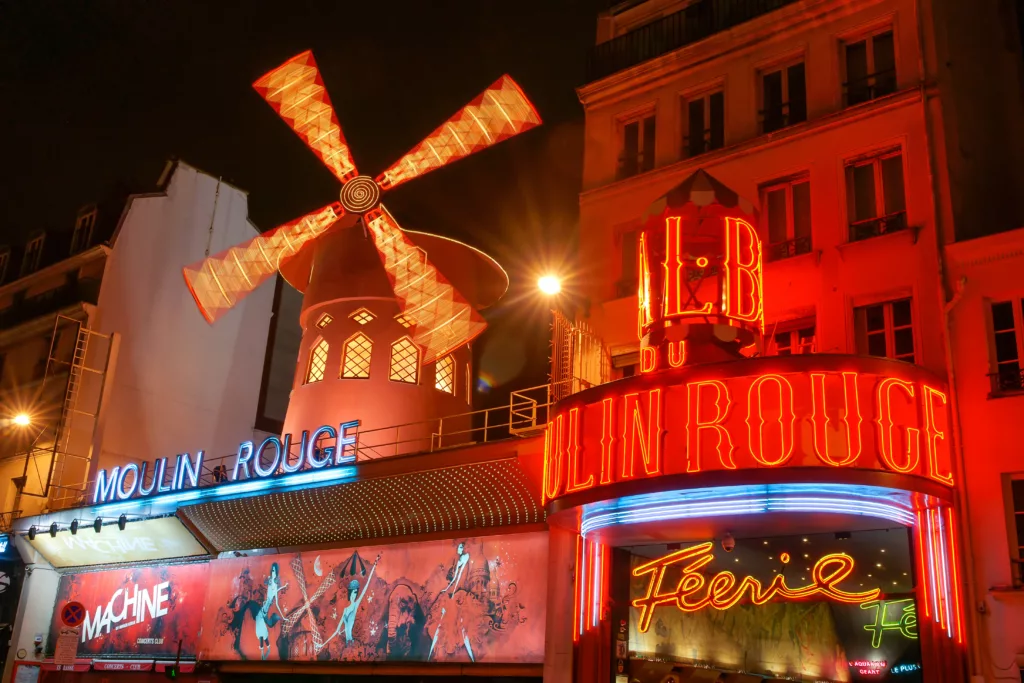
Get ready to experience the heartbeat of Parisian nightlife as you step into the iconic Moulin Rouge. This world-renowned cabaret, known for its red windmill on the roof, has been lighting up the City of Light with its dazzling performances since 1889.
Once a daring and innovative venue, the Moulin Rouge played a pivotal role in liberating women and transforming the cultural scene of Paris. It’s the birthplace of the modern form of the can-can dance, originally introduced as a seductive dance by the courtesans who operated from the site. The electrifying energy and vivacious spirit of the era continue to permeate the Moulin Rouge’s shows today.
Each night, a cast of talented artists, including dancers, singers, and acrobats, put on a spectacular show titled “Féerie.” It’s a two-hour extravaganza of glittering costumes, extravagant sets, and captivating music that is sure to leave you entranced. The breathtaking performances, combined with the allure of the historic venue, create an atmosphere that is truly immersive and quintessentially Parisian.
Whether you’re a fan of dance, a history enthusiast, or simply looking for an unforgettable night out, the Moulin Rouge promises a spectacle of romance, glamour, and excitement that echoes the heyday of Parisian cabaret.
Voyagix Tips
For a dazzling night at the Moulin Rouge, consider these tips:
- Getting There: The Moulin Rouge is located in the Pigalle district, a short walk from the Blanche Metro station. Here’s the official Moulin Rouge website for more information.
- Book in Advance: Shows often sell out, so it’s recommended to book your tickets online in advance. You can book them on the official ticket portal. The Moulin Rouge offers various packages including show-only and dinner-show options.
- Dress Code: The Moulin Rouge enforces a smart dress code. Sportswear, shorts, and flip flops are not allowed.
- Arrive Early: The doors open one hour before showtime. Arriving early allows you to enjoy the ambiance and perhaps even savor a pre-show dinner.
Immersing yourself in the dazzling world of Moulin Rouge, you’ll experience the timeless magic of Parisian cabaret. The sensational performances, extravagant sets, and vibrant energy will transport you into a realm of glamour, romance, and spectacle, ensuring a night to remember in the City of Light.
6. Bask in the Splendor of Château de Versailles
Escape the urban hustle and bustle of Paris for a day to immerse yourself in the grandeur of the Château de Versailles. This lavish palace, a shining example of absolute monarchy of the Ancien Régime, stands as a testament to the opulence of 17th-century French architecture and is recognized as a UNESCO World Heritage site.
King Louis XIV transformed his father’s hunting lodge into the monumental Versailles Palace, designed to awe his subjects and European royals with his wealth and power. As you step into the palace, you’ll be struck by its unparalleled splendor. The Hall of Mirrors, with its 357 mirrors, crystal chandeliers, and gilded statues, is a true highlight, a marvel of baroque interior design.
Yet, Versailles is not just a palace; it’s an entire estate. The sprawling gardens, designed by landscape architect André Le Nôtre, are as breathtaking as the château itself. They feature meticulous landscaping, ornate fountains, charming groves, and the grand Canal, where you can rent a rowboat for a leisurely paddle.
The Domaine de Marie-Antoinette, including the Petit Trianon, Grand Trianon, and the Queen’s Hamlet, is another must-see. This pastoral retreat was a private sanctuary for the queens of France to escape courtly life.
Voyagix Tips
To maximize your visit to Château de Versailles, consider these tips:
- Getting There: The palace is a 30-minute train ride from Paris. The RER C train goes directly to Versailles-Rive Gauche, a short walk from the palace. For more information, visit the official Versailles website.
- Buy Tickets in Advance: Purchase your tickets online in advance from the official ticket portal to avoid long lines. Remember, the first Sunday of the month from November to March offers free entrance.
- Plan Your Day: The Château de Versailles is vast, so plan your day in advance to prioritize what you want to see. Don’t miss the fountain shows, which run on specific dates.
- Consider a Guided Tour: A guided tour offers valuable historical context and may grant access to areas not open to the general public.
Visiting the Château de Versailles allows you to step back in time, experiencing firsthand the extravagance of the French monarchy. From its gilded halls to its picturesque gardens, every aspect of Versailles is a feast for the senses, offering a deep and fascinating insight into France’s regal history.
7. Soak Up the Sun at Paris Plages
When the heat of the Parisian summer sets in, join locals and tourists alike for a refreshing urban beach experience at Paris Plages. Every July and August, the city transforms several spots along the River Seine into temporary artificial beaches, complete with sand, sun loungers, ice cream stands, and even palm trees. It’s an innovative way to enjoy the summer without leaving the city!
Initiated in 2002 by the Mayor of Paris, Paris Plages brings a touch of the seaside to the city center. The event is known for its diverse range of activities. You can lounge under parasols, join in beach volleyball games, take part in water sports, or attend free evening concerts. There’s also a dedicated kids’ area with various games, making it a family-friendly destination.
The most popular spots are along the right bank of the Seine, near the Hôtel de Ville, and the Bassin de la Villette in the 19th arrondissement. The latter even offers boating and a swimming area. As you soak up the sun, you’ll also enjoy stunning views of nearby landmarks like Notre Dame and Île Saint-Louis.
Paris Plages isn’t just a unique way to beat the heat—it’s a testament to Paris’ creativity in bringing beach vibes to an urban landscape. It’s a temporary paradise that adds a festive atmosphere to the city each summer.
Voyagix Tips
For an enjoyable day at Paris Plages, consider these tips:
- Getting There: The beach locations are accessible via metro. For more details on locations and activities, visit the official Paris Plages page.
- Timing: Paris Plages typically runs from mid-July to mid-August. The beaches are open daily and entry is free. Activities and concert times may vary.
- What to Bring: Pack sunscreen, a hat, and a towel. Beach chairs and umbrellas are usually provided, but they can run out during peak times.
- Food and Drink: There are numerous food stands, but you’re also welcome to bring your own picnic.
With the Seine as your backdrop and sand between your toes, Paris Plages offers a beach holiday right in the heart of the city. Whether you’re sunbathing, engaging in a friendly game of volleyball, or simply enjoying a cool ice cream, it’s an idyllic summer experience in the City of Light.
8. Sample Authentic French Cuisine
Experience the heart and soul of French culture by indulging your taste buds at a charming local bistro. Tucked away from the main tourist trails, these intimate dining spots offer an authentic Parisian culinary experience that goes beyond just good food. It’s about the ambiance, the service, and the sheer joy of savoring classic French dishes in a cozy setting.
From the moment you step into a traditional Parisian bistro, you’ll feel its unique charm. Typically small and often family-run, these establishments offer a warm, welcoming atmosphere. Expect chalkboard menus, vintage decor, and the enticing aroma of home-style cooking wafting from the kitchen.
The magic lies in the simplicity and honesty of bistro cuisine. The menu might feature hearty staples like coq au vin, duck confit, escargots, or a comforting pot-au-feu. Pair your meal with a glass of local wine recommended by your waiter, and don’t forget to save room for a classic French dessert like crème brûlée or tarte tatin.
Dining at a bistro isn’t just about the food—it’s about slowing down, immersing yourself in the local culture, and embracing the French way of life. It’s an experience every food lover should have in Paris.
Voyagix Tips
For a delightful bistro experience in Paris, consider these tips:
- Finding a Bistro: Look for places away from tourist-heavy areas for a more authentic experience. The neighborhoods of the Marais, Bastille, and Montmartre are known for their charming bistros. Check reviews on websites like TripAdvisor.
- Reservations: Popular bistros can fill up quickly, especially during dinner hours. It’s a good idea to make a reservation, if possible.
- Menu du Jour: Many bistros offer a daily set menu, or ‘menu du jour’, which is typically good value for money.
- Speak Some French: Even a few basic phrases in French can enhance your bistro experience. The staff will appreciate your effort to engage with the local culture.
Indulging in a meal at a local bistro is a delightful way to savor Paris’ gastronomic heritage. The charming decor, the mouth-watering French cuisine, and the friendly atmosphere combine to create a truly unforgettable dining experience. It’s a culinary adventure that’s not to be missed on any Parisian itinerary.
9. Wander Through the Paris Flea Markets
Dive into a treasure trove of eclectic finds at the sprawling Paris Flea Markets, also known as the “Marchés aux Puces”. With a history dating back to the late 19th century, these bustling markets offer an exciting opportunity for seasoned antique hunters and casual browsers alike. It’s the perfect destination for a leisurely afternoon of shopping and exploration.
The largest and most famous of the city’s flea markets is the Saint-Ouen Flea Market in the 18th arrondissement. Spanning seven hectares and housing over 2,000 vendors, it’s one of the biggest antique markets in the world. Here, you can uncover everything from vintage clothing and jewelry to antique furniture, art, books, and records. The market’s diverse offerings are organized into several sub-markets, each specializing in different types of goods.
Strolling through the labyrinthine stalls of the flea market is like stepping back in time. Every item has a story, and part of the fun is chatting with the vendors to learn more about the origins of their wares. Don’t be afraid to haggle—it’s all part of the experience.
Even if you’re not in the market for antiques, the Paris Flea Markets are worth a visit for their vibrant atmosphere alone. Numerous cafes and restaurants on-site offer a chance to rest your feet and enjoy some local cuisine.
Voyagix Tips
For an enjoyable visit to the Paris Flea Markets, consider these tips:
- Getting There: The Saint-Ouen Flea Market is a short walk from the Porte de Clignancourt metro station.
- Timing: The markets operate on Saturday, Sunday, and Monday. Some stalls may not open until late in the morning, so there’s no need to arrive too early.
- Negotiate: Haggling is a common practice. If you see something you like, don’t be afraid to negotiate the price.
- Beware of Pickpockets: Like any busy tourist area, be aware of your belongings.
Whether you’re a seasoned antique collector, a lover of vintage fashion, or simply a curious traveler, the Paris Flea Markets offer an intriguing glimpse into the past and a unique shopping experience. This bustling marketplace, filled with hidden gems and one-of-a-kind items, is a must-visit for any visitor to the City of Light.
10. Unwind at the Parc des Buttes-Chaumont
Escape the bustling city streets and immerse yourself in the natural beauty of Parc des Buttes-Chaumont, one of the largest and most romantic parks in Paris. This gem in the 19th arrondissement offers a tranquil retreat filled with lush greenery, charming footbridges, cascading waterfalls, and panoramic city views.
Built during the reign of Napoleon III and opened in 1867, the park spans over 61 acres and features a unique landscape design inspired by English and Chinese gardens. The park’s key attraction is the Temple de la Sibylle, perched atop a rocky island in the park’s large lake. Accessible via a suspension bridge, the temple provides a stunning view of the Paris skyline, including the Sacré-Cœur Basilica.
Buttes-Chaumont isn’t just for scenic strolls—it’s packed with activities, too. Engage in a friendly game of boules, rent a rowboat, or join locals for a picnic on the sprawling lawns. Children can enjoy the park’s playgrounds, puppet theater, and even a carousel.
The park is a haven for bird watchers, home to over 47 bird species. Additionally, numerous paths and trails make it perfect for joggers and walkers alike.
Voyagix Tips
For an enjoyable visit to Parc des Buttes-Chaumont, consider these tips:
- Getting There: The park is well-connected by metro. The closest stations are Buttes Chaumont, Botzaris, and Laumière.
- Timing: The park is open every day. Hours vary with the season, so check in advance.
- Bring a Picnic: Stock up on delicious French bread, cheese, and wine from a local market and enjoy a picnic with views of the lake.
- Wear Comfortable Shoes: The park is hilly and involves some walking, so comfortable shoes are recommended.
Whether you’re seeking a quiet spot to relax, a picturesque jogging route, or a scenic picnic spot, Parc des Buttes-Chaumont offers a refreshing slice of nature right in the heart of Paris. Its charming landscapes and peaceful ambiance make it a must-visit destination for any Parisian itinerary.
11. Visit the lesser-known Musée Jacquemart-André
Dive into a world of artistic elegance at the Musée Jacquemart-André, a hidden cultural gem nestled in the heart of Paris’ 8th arrondissement. More than just an art museum, this 19th-century mansion is a testament to the exquisite taste of its original owners, Édouard André and Nélie Jacquemart, and offers visitors a unique glimpse into Parisian high society during the Belle Époque.
As avid art collectors, the couple amassed an impressive array of paintings, sculptures, decorative arts, and antiques from across Europe. The museum showcases this extensive collection in a setting that is as much a part of the exhibition as the artwork itself. From the opulent State Apartments to the ornate Winter Garden, each room of the mansion offers a different aesthetic experience.
The museum’s collection spans several centuries and includes works by renowned artists such as Canaletto, Rembrandt, and Fragonard. The Italian Renaissance is particularly well represented, with a gallery dedicated to Florentine sculptures and paintings.
After exploring the museum, take a moment to unwind at the café located in the former dining room. Set against a stunning backdrop of frescoes and tapestries, it’s the perfect spot for a leisurely coffee or lunch.
Voyagix Tips
For an enjoyable visit to Musée Jacquemart-André, consider these tips:
- Getting There: The museum is easily accessible via the Saint-Philippe du Roule or Miromesnil metro stations. Visit the museum’s official website for more information.
- Timing: The museum is open every day, including public holidays. It’s less crowded in the early morning or late afternoon.
- Audio Guide: Consider renting an audio guide to learn more about the artworks and the mansion’s history.
- Visit the Café: Don’t miss the chance to relax in the museum’s elegant café, a highlight of any visit.
Whether you’re an art aficionado or a history buff, the Musée Jacquemart-André offers a rich cultural experience that transcends time. Its intimate setting, stunning collections, and captivating history make it an essential stop on any Parisian cultural tour.
12. Explore the Belleville Neighborhood
Step off the beaten path and experience local life in the vibrant Belleville neighborhood. Nestled in the northeastern part of Paris, Belleville is a lively, multicultural district that perfectly encapsulates the city’s modern, diverse spirit. With its bustling markets, colorful street art, and myriad of global cuisines, Belleville is a melting pot of cultures and creativity.
Once a working-class village outside of Paris, Belleville has transformed into one of the city’s most dynamic neighborhoods. A stroll down its hilly streets reveals an eclectic blend of architectural styles, from classic Haussmannian buildings to modern structures. Art lovers will appreciate the district’s thriving street art scene, with murals and graffiti adorning many walls.
Belleville is home to a vibrant mix of communities, including one of Paris’ largest Chinatowns. This cultural diversity is reflected in the area’s culinary offerings, where you can savor everything from dim sum to North African couscous, alongside classic French bistros.
Make sure to visit the Parc de Belleville, which offers one of the best panoramic views of the Paris skyline. The park is also home to a vineyard that continues Belleville’s historical tradition of winemaking.
Voyagix Tips
For an enjoyable visit to Belleville, consider these tips:
- Getting There: Belleville is easily accessible by metro via the Belleville or Pyrénées stations.
- Explore the Street Art: Don’t miss the opportunity to explore Belleville’s vibrant street art scene. A self-guided walk or an organized tour can help you discover the area’s best murals.
- Try the Food: From Asian eateries to North African cuisine and traditional French bistros, there’s a wealth of dining options in Belleville. Be sure to try some local favorites!
- Visit the Park: Parc de Belleville offers stunning views of the city and a quiet retreat from the bustling streets below.
From its lively markets and diverse food scene to its creative spirit and local charm, Belleville offers an authentic slice of Parisian life. This vibrant neighborhood invites visitors to experience a different side of Paris—one that’s as multicultural and dynamic as the city itself.
13. Cruise Down the Canal Saint-Martin
Swap the bustling Seine for a peaceful boat ride down the picturesque Canal Saint-Martin. Stretching over 4.6 kilometers through some of the most vibrant parts of the city, this lesser-known waterway is a secret treasure of Paris, lined with trendy cafés, boutiques, and charming footbridges.
Built during Napoleon Bonaparte’s reign in the early 19th century, the canal was initially used for supplying fresh water to the city’s rapidly growing population. Today, it serves as a tranquil haven, away from the city’s busier areas. Watch as the world floats by, and the canal’s nine locks are operated—an experience that feels like a step back in time.
Surrounding the canal, you’ll find a hip and vibrant neighborhood filled with trendy boutiques and vintage shops. Art and culture lovers can explore numerous independent art galleries and bookshops scattered throughout the area. Foodies will delight in the diverse array of bistros, wine bars, and artisanal bakeries lining the canal.
As evening falls, the canal banks become a popular gathering spot for locals. Join them for a laid-back picnic, or simply enjoy the relaxed atmosphere and watch the world go by.
Voyagix Tips
For an enjoyable visit to Canal Saint-Martin, consider these tips:
- Getting There: The canal is easily accessible by metro. The closest stations are République, Goncourt, and Jacques Bonsergent.
- Boat Tours: Several companies offer boat tours along the canal. It’s a unique and leisurely way to explore the area.
- Explore on Foot: If you prefer to stay on dry land, the canal’s picturesque banks make for a lovely stroll. You’ll pass under charming footbridges and by trendy shops and cafés.
- Enjoy the Nightlife: Stay after sunset to experience the canal’s vibrant nightlife. The area is full of trendy bars and bistros perfect for an evening out.
With its relaxed vibe, charming scenery, and lively surrounding neighborhood, a boat ride—or a leisurely walk—along Canal Saint-Martin offers a refreshing perspective on the City of Light. It’s a slice of Parisian life not to be missed.
14. Attend a French Cooking Class
Master the art of French cooking at a local cooking class in Paris. French cuisine is renowned worldwide for its finesse and flavor, and learning how to create these delicious dishes for yourself is both a tasty and educational experience. Whether you’re an experienced home cook or a novice in the kitchen, these classes cater to all skill levels and are a delightful way to immerse yourself in French culture.
Classes typically begin with a visit to a local market, where you’ll learn how to select the freshest ingredients. Your instructor, usually a professional chef, will guide you through the process and share valuable tips about French cooking techniques and traditions. Back in the kitchen, you’ll learn how to prepare a variety of dishes—from savory quiches and ratatouille to delicate pastries and crème brûlée.
As you chop, sauté, and simmer, you’ll not only learn about the culinary practices that make French cuisine so renowned but also gain insights into its cultural significance. And, of course, the best part of any cooking class is the opportunity to enjoy your delicious creations at the end.
Cooking classes can be found across Paris, each offering a unique approach and focus—from general French cuisine to specific regional styles or pastry-making classes.
Voyagix Tips
For an enjoyable and rewarding cooking class experience in Paris, consider these tips:
- Finding a Class: Cooking classes are offered throughout the city. Websites such as La Cuisine Paris and Le Foodist offer a variety of options to suit your interests and schedule.
- Booking in Advance: Popular classes can fill up quickly, especially during peak tourist season. It’s best to book your class in advance to secure your spot.
- Dress Comfortably: You’ll be on your feet for a good portion of the class, so wear comfortable shoes. Also, consider wearing clothes that you won’t mind getting a bit messy.
- Ask Questions: Don’t be shy! Your chef instructor is a wealth of knowledge. Asking questions not only helps you learn but also enriches the overall experience.
Joining a cooking class in Paris offers a unique, hands-on way to delve into the rich French culinary tradition. You’ll come away with new skills, delicious memories, and perhaps even a recipe or two to impress friends and family back home.
15. Photograph the Colorful Rue Crémieux
Trade in the grandeur of Paris’ iconic landmarks for the charming, small-scale beauty of Rue Crémieux. This quaint, cobblestone street in the 12th arrondissement is a visual delight, lined with vibrantly colored houses that seem to pop straight out of a storybook. For photography lovers and Instagram enthusiasts, it’s undoubtedly one of the city’s best photo spots.
This pedestrian-only street is a little oasis of calm in the bustling city. The two-story houses, painted in a variety of pastels and bold hues, are adorned with window boxes full of flowers and quaint decorations. Every house on this street has its unique character, making a stroll down Rue Crémieux a captivating visual journey.
The street has a fascinating history, too. Built in the 1850s, Rue Crémieux was initially inhabited by workers. Over the years, it has retained its unique charm and resisted modernization, making it a charming window into the past.
While the colorful facades are undeniably the main draw, the surrounding area also offers plenty to explore. Close by, you’ll find the bustling Aligre Market, a traditional Parisian market perfect for a post-stroll snack or drink.
Voyagix Tips
For a pleasant visit to Rue Crémieux, consider these tips:
- Getting There: Rue Crémieux is located in the 12th arrondissement, close to the Gare de Lyon. You can check the RATP website for public transportation options.
- Best Time to Visit: Early morning or late afternoon are great times to visit for the best lighting for photos. Plus, you’ll avoid the crowds that can gather during peak hours.
- Respect Residents: Remember, Rue Crémieux is a residential street. Always respect residents’ privacy and keep noise to a minimum.
- Explore the Area: Make sure to explore the surrounding area. The nearby Aligre Market is worth a visit for a glimpse of local life and some delicious food.
A stroll down the charming Rue Crémieux offers a colorful, peaceful respite from the hustle and bustle of Paris. Don’t forget your camera; this street is a dream for photographers and a delightful hidden gem to discover.
16. Roam the Passages Couverts
Take a step back in time and discover the enchanting Passages Couverts of Paris. These covered walkways, with their distinctive glass roofs, are throwbacks to the 19th century when they were the city’s first malls. Today, they’re charming havens away from the bustling city streets, filled with unique boutiques, antique bookshops, quirky cafés, and more.
Located mainly in the 2nd and 9th arrondissements, each passage has its unique character and charm. The elegant Galerie Vivienne, with its intricate mosaics, is home to upscale boutiques and tea rooms. Passage Verdeau, known for its antique bookshops and vintage postcard sellers, is a paradise for bibliophiles and collectors. The exotic Passage Brady, often referred to as ‘Little India’, is packed with Indian, Pakistani, and Mauritian restaurants and grocery stores.
These historic passageways offer a fascinating glimpse into Paris’ past. Strolling beneath their arching glass roofs, you’ll be transported to another era, far removed from the modern hustle and bustle just outside. Whether you’re indulging in some retail therapy, sipping a café au lait, or merely people-watching, the Passages Couverts offer a uniquely Parisian experience.
Voyagix Tips
For a delightful visit to the Passages Couverts, consider these tips:
- Finding Them: There are around 20 passages scattered around the city. The most famous ones include Galerie Vivienne, Passage Verdeau, and Passage Brady. You can use this guide for more information and locations.
- Opening Hours: Most passages are open during regular shopping hours but can be closed on Sundays or in the evenings. It’s best to check in advance.
- Taking Photos: The Passages Couverts are great for photography, thanks to their architectural details and interesting light effects. However, remember to respect the privacy of shop owners and patrons.
- Take Your Time: The real charm of these passages is in their details – the ornate railings, vintage signage, and quirky window displays. Don’t rush; take your time to soak it all in.
Exploring the Passages Couverts of Paris provides a charming and unique experience. A delightful blend of history, culture, and shopping, these hidden gems are a must-visit for any traveler wanting to experience the city’s authentic side.
17. Visit the Intriguing Museum of Hunting and Nature
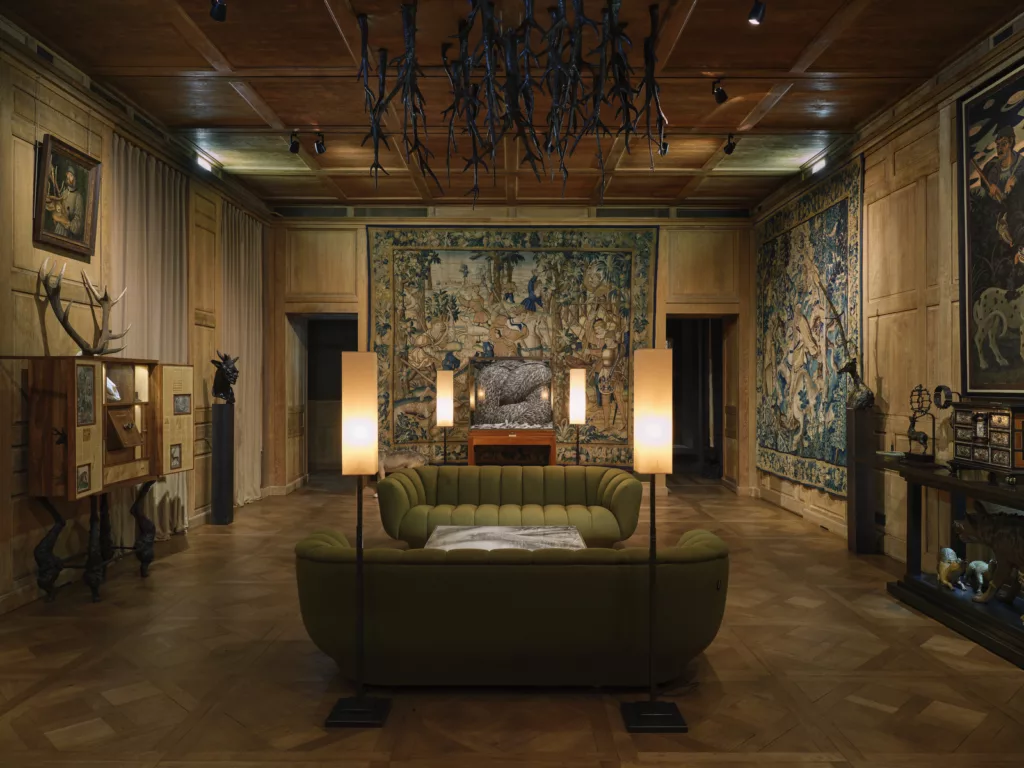
Step off the beaten path and explore the curious Museum of Hunting and Nature, a unique institution nestled in the heart of the Marais district. This offbeat museum presents an intriguing mix of art and artifacts, dedicated to exploring the relationships between humans and animals through the ages.
The museum’s collections are as eclectic as they are fascinating. From ancient hunting weapons and taxidermy specimens to contemporary art installations, each exhibit provides a unique lens through which to examine human interaction with nature. The museum’s approach is far from traditional, often blurring the lines between natural history, art, and cultural heritage.
Although the subject matter might not appeal to everyone, the museum’s innovative and thought-provoking displays often leave visitors pleasantly surprised. Amid the antique firearms and mounted animal heads, you’ll find quirky artworks and installations that challenge your perceptions and spark conversations. Even the building itself, a beautifully restored 17th-century mansion, adds to the museum’s unique atmosphere.
Voyagix Tips
For a memorable visit to the Museum of Hunting and Nature, consider these tips:
- Getting There: The museum is located in the Marais district, within walking distance from several Metro stations. You can check the museum’s official website for directions and more information.
- Opening Hours: The museum is closed on Mondays and Tuesdays. It’s open from 11 am to 6 pm on other days, with extended hours on Wednesdays.
- Prepare for Surprises: This is not your typical museum. From the quirky exhibits to the thought-provoking artworks, expect the unexpected!
- Explore the Marais: The museum is located in one of Paris’ most historic and trendy districts. After your visit, take some time to explore the surrounding boutiques, galleries, and cafés.
With its intriguing mix of art and artifacts, the Museum of Hunting and Nature provides an offbeat yet fascinating insight into a lesser-explored side of humanity’s relationship with nature. It’s a memorable addition to any Paris itinerary, especially for those seeking something a little different.
18. Dine in the Dark at Dans le Noir?
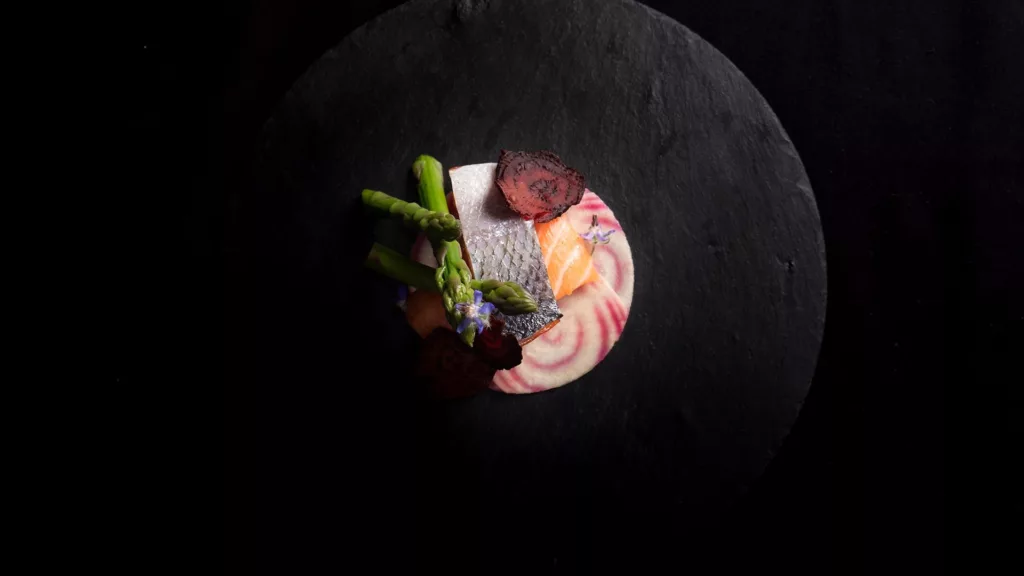
Get ready for a dining experience like no other at Dans le Noir?, a unique restaurant located in the heart of Paris. The concept? Dine in total darkness, relying solely on your senses of taste, touch, smell, and sound. This unforgettable sensory adventure is about more than just the food – it’s an invitation to experience dining in a completely new way.
Upon arrival, you’ll choose from one of the surprise menus – Chef’s, Fish, Meat, or Vegan. You’ll then be guided into the pitch-black dining room by the restaurant’s visually impaired staff, who serve as your eyes for the evening. Once enveloped in darkness, you’ll enjoy a meal filled with surprises, discoveries, and new tastes as you rely on your other senses to navigate your plate.
This unusual dining experience is not only a gastronomic adventure but also a social one. It offers a new perspective on the world of visual impairment and challenges your preconceptions about dining and social interaction. Dans le Noir? is not just a meal; it’s an experience that stays with you long after you’ve stepped back into the light.
Voyagix Tips
To ensure an enjoyable experience at Dans le Noir?, consider these tips:
- Booking a Table: Due to its popularity, it’s advisable to reserve your table in advance. You can do so via their official website.
- Dietary Restrictions: Be sure to inform the staff about any dietary restrictions or allergies you have when booking your table.
- What to Wear: Comfortable clothing is recommended. Since you’ll be dining in darkness, there’s no need to dress up!
- Personal Belongings: You’ll be asked to secure your phone, watch, or anything else that may emit light before entering the dining room.
Dining at Dans le Noir? is more than a meal; it’s a unique sensory adventure that broadens your horizons and challenges your perceptions. It’s a must-try for any intrepid foodie visiting Paris.
19. Witness the Magic of Shakespeare and Company
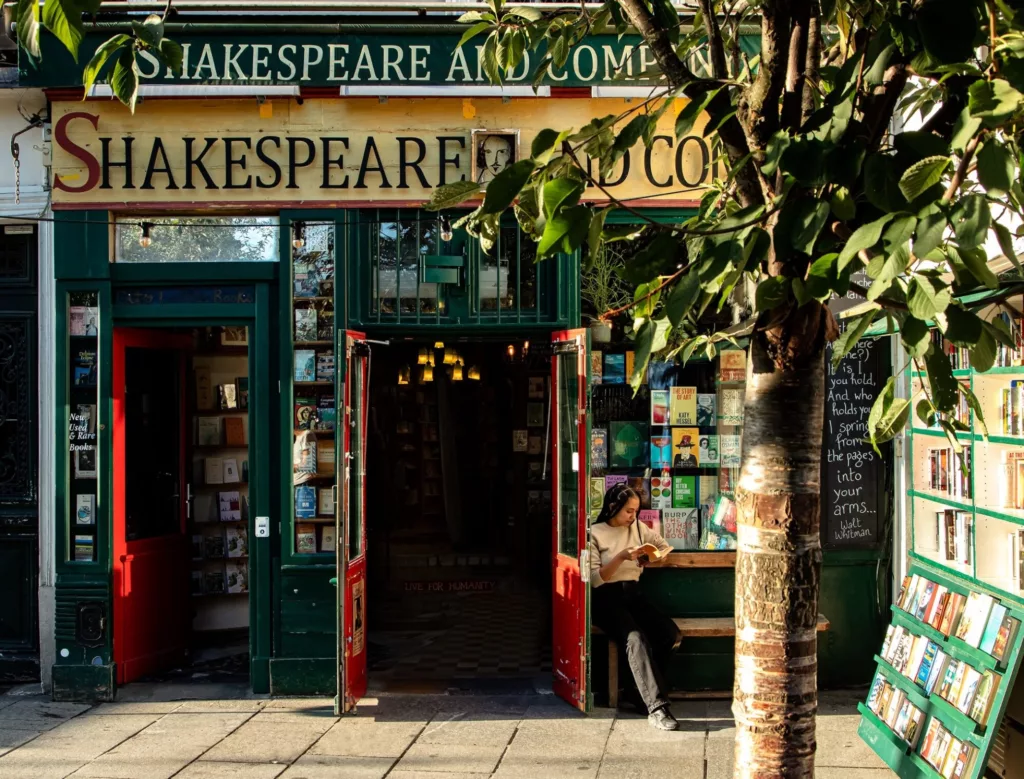
Book lovers, rejoice! Step into the world of Shakespeare and Company, a legendary English-language bookstore nestled in the heart of Paris, across the river from Notre-Dame. With its rich literary history, this quaint, two-story shop is a haven for bibliophiles and a fascinating piece of cultural heritage.
Founded by American George Whitman in 1951, the bookstore was named in homage to a previous bookstore by the same name which was frequented by the likes of Hemingway and Fitzgerald during the 1920s. Whitman’s Shakespeare and Company quickly became a hub for Anglophone writers and readers in Paris, continuing the legacy of its namesake.
The store’s creaky floors, overflowing bookshelves, and cozy reading nooks make it feel more like a labyrinthine literary house than a commercial shop. Its collection of new, used, and rare books covers a wide array of genres, ensuring there’s something for everyone. The store also provides a home for aspiring writers, known as “Tumbleweeds”, who earn their keep by helping in the shop and promising to read a book a day.
Voyagix Tips
For an unforgettable visit to Shakespeare and Company, consider these tips:
- Getting There: The bookstore is centrally located and easily accessible. Check the official website for directions and more information.
- When to Visit: Visit during off-peak hours for a more tranquil experience. The store can get crowded during weekends and evenings.
- Events and Workshops: Shakespeare and Company hosts regular readings, workshops, and festivals. Check their event calendar for details.
- Purchasing Books: Purchasing a book from Shakespeare and Company is like taking home a piece of literary history. If asked, the staff will stamp your book with the store’s iconic logo.
Visiting Shakespeare and Company is a literary pilgrimage that offers more than just books. It’s a connection to the rich tapestry of writers who have found inspiration within its walls. It’s an absolute must for any book lover in Paris.
20. Savor Wine at a Local Parisian Cave
Step into the enchanting world of French wine at a cozy Parisian wine cave. Beneath the bustling streets of Paris, you’ll find a subterranean sanctuary where wine is not just a beverage, but a culture, a history, and a cherished ritual. A visit to a wine cave offers an immersive experience into the heart of France’s renowned wine tradition.
The wine caves of Paris are centuries-old cellars that have aged countless bottles of French wine. Upon entering, you’ll be embraced by the earthy aroma of aged wood and wine, evoking a sense of the rich history that resides within these stone-clad walls. Here, experienced sommeliers guide guests through the nuances of French wine, from the complexities of different varietals and regions to the art of pairing wine with food.
As you sip and savor each glass, you’ll not only enjoy the exquisite flavors and aromas of some of the finest wines but also learn about the stories, the traditions, and the people behind them. This experience is both educational and sensory, an opportunity to appreciate French wine in a context that goes beyond the tasting.
Voyagix Tips
For a memorable visit to a Parisian wine cave, consider these tips:
- Choosing a Wine Cave: There are numerous wine caves in Paris, each with its unique offerings. Research and choose one that aligns with your preferences. Websites like O Château or Les Caves du Louvre can help you make your choice.
- Reservations: Some wine caves require or recommend reservations, especially for tastings and tours. Be sure to check their policies beforehand.
- Ask Questions: Don’t be shy! The sommeliers are there to share their knowledge and help enhance your tasting experience.
- Pace Yourself: Tasting wine is not a race. Take your time to savor each sip and immerse yourself in the experience.
Whether you’re a seasoned oenophile or a wine novice, a visit to a Parisian wine cave is a must. It’s a journey of the senses that delves into the heart of French culture and leaves you with a deeper appreciation for the world of wine.
21. Enjoy the Tranquility of Sainte-Chapelle
Conclude your Parisian adventure with a visit to the stunning Sainte-Chapelle, a marvel of gothic architecture tucked away within the heart of Paris. Known for its breathtaking stained-glass windows, this royal chapel is a testament to the grandeur and sophistication of the Medieval Age.
Built in the 13th century by King Louis IX to house his collection of holy relics, Sainte-Chapelle is a two-level chapel with a relatively austere lower chapel and an upper chapel resplendent with towering stained-glass windows. This upper chapel is a true feast for the eyes. Fifteen immense stained-glass windows, each standing more than 50 feet high, flood the space with vibrant, multi-colored light, creating an ethereal atmosphere.
The windows depict over 1,000 scenes from the Old and New Testaments, narrating the biblical history of the world up to the arrival of the relics in Paris. Gazing upon them, you’re not only admiring an extraordinary work of art but also reading a story meticulously crafted in glass and light.
Voyagix Tips
For an unforgettable visit to the Sainte-Chapelle, consider these tips:
- Getting There: The chapel is located on the Île de la Cité, close to the Notre-Dame. Refer to the official website for more information and directions.
- Best Time to Visit: To fully appreciate the stunning stained-glass windows, visit on a sunny day when the sunlight can illuminate the windows to their full effect. Mornings are typically less crowded.
- Concerts: Sainte-Chapelle frequently hosts evening classical concerts. Experiencing music in such a stunning setting is truly unique.
- Combine Your Visit: Consider combining your visit to Sainte-Chapelle with the nearby Conciergerie, a former royal palace turned prison during the French Revolution.
Visiting Sainte-Chapelle is an enchanting experience that gives you a glimpse into Paris’s rich past. As you stand beneath the radiant canopy of stained glass, you’ll feel the deep sense of history and artistic beauty that pervades this city. This visit is a fitting end to any journey in Paris.
Conclusion
Paris, the City of Lights, with its eclectic mix of world-renowned sights and hidden treasures, promises a unique travel experience for every visitor. As you traverse the city, you’ll be mesmerized by its elegance, charmed by its culture, and entranced by its vivacity. Every corner of Paris tells a story, every street echoes with history, and every experience leaves an indelible imprint on your heart.
Whether you’re witnessing the breathtaking architecture of Sainte-Chapelle, sampling wine in a cozy Parisian cave, or navigating the charming covered walkways of Passages Couverts, you’re not just exploring a city – you’re living a story, your unique Parisian tale. And in doing so, you’re not just a visitor, but a part of the city’s vibrant tapestry.
So, embark on your Parisian adventure with this curated list of 21 things to do in Paris, from the iconic landmarks to the lesser-known hidden gems. Immerse yourself in the captivating charm of the city, soak in its rich history and culture, and create your own Parisian memories that will last a lifetime. After all, a journey to Paris isn’t merely a trip, it’s an experience – enchanting, inspiring, and unforgettable.

